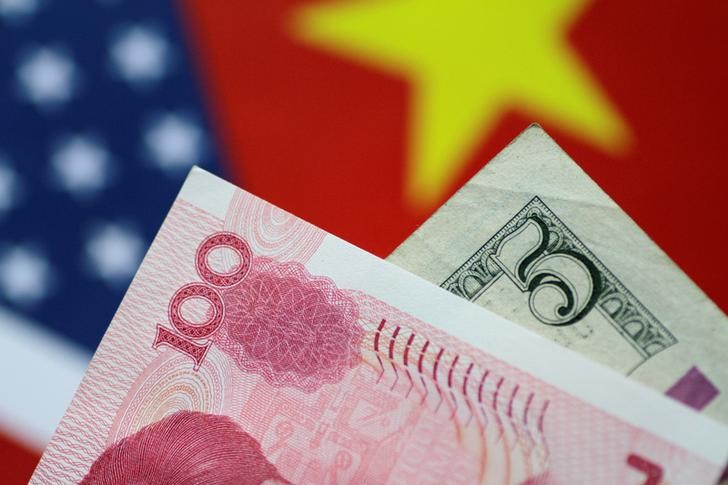Investing.com-- Most Asian currencies retreated on Friday as the dollar recovered a measure of recent losses after a string of Federal Reserve officials warned that bets on interest rate cuts may be premature.
While the greenback was still headed for some weekly losses, it was trading well above a one-month low hit on Thursday. U.S. Treasury yields also rebounded, pressuring risk-driven markets.
Regional factors also weighed on Asian currencies, as economic data from China and Japan underwhelmed.
Chinese yuan weak amid mixed economic prints
The Chinese yuan’s USDCNY pair rose 0.1%, moving back to six-month highs above 7.22.
Economic readings from the country continued to offer middling signals on an economic recovery. Data on Friday showed industrial production grew more than expected in April.
But other readings showed growth in retail sales slowed sharply, while a decline in Chinese house prices accelerated last month.
Chinese fixed asset investment also grew less than expected in April, while unemployment fell from a seven-month high, but still remained relatively high.
The readings presented a mixed outlook for Asia’s biggest economy. They also came after the U.S. imposed higher tariffs on key Chinese industries, sparking fears of a reignited trade war between Beijing and Washington.
Concerns over China weighed on other currencies with trade exposure to the country. The Australian dollar’s AUDUSD pair fell 0.2%, while the South Korean won’s USDKRW pair rose 0.7%.
The Singapore dollar’s USDSGD pair rose 0.1% after the island state’s non-oil exports grew at a slower-than-expected pace in April, and also contracted sharply from last year.
Weakness in the Japanese yen deepened after weaker-than-expected gross domestic product data for the first quarter. The USDJPY pair rose 0.3% and was close to breaking above 156, extending sharp overnight gains.
Dollar recoups most weekly losses as Fed downplays rate cuts
The dollar index and dollar index futures rose 0.2% each in Asian trade, extending an overnight rebound from one-month lows.
The dollar’s recovery came as several Fed officials, specifically members of the bank’s rate-setting committee, said that they needed much more confidence that inflation was coming down, beyond some easing inflation in April.
This saw traders scale back bets on a September rate cut, albeit slightly, according to the CME Fedwatch tool.
Still, the dollar was set to lose about 0.7% this week, following some softer-than-expected consumer price index data for April. The reading, coupled with soft retail sales data pushed up hopes that inflation will cool in the coming months.
